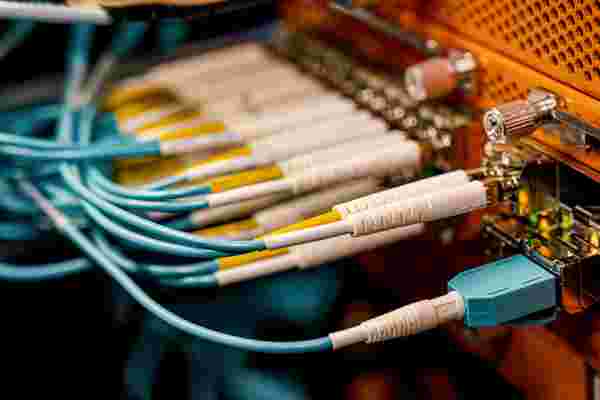If you're looking to score a price cut on Samsung's fitness-inspired smartwatch, then you've come to the right place. We're rounding up all the best Samsung Galaxy Watch Active deals so you can be sure to find the lowest price online. As the name implies, the Samsung Galaxy Watch Active is focused on fitness, and its new design and features reflect that. The ultra-lightweight Galaxy Active comes in one size and features a 1.1-inch display. The fitness watch continually monitors your heart and will send alerts when an abnormal heart rate is detected. The Samsung watch can also help with your sleep and stress, analyzing your sleep patterns and sending you breathing exercises when high-stress levels are detected. The Galaxy Active will also help you keep on track with your health and fitness goals by tracking up to 39 exercises and displaying your health summary on the smartwatch display. The waterproof watch comes in four different colors and has a battery that lasts for days on a single charge.

The best Samsung Galaxy Active Watch deals
Released in 2019, the Samsung Galaxy Active Watch had a starting price of $199.99/£229, but thanks to the release of the Active 2, the price has dropped since then, and easier than ever to find Samsung Galaxy Active Watch deals. The Active watch has a cheaper starting price when compared to the original Samsung Galaxy Watch because the Active is missing the rotatable bezel, a core feature from the Samsung Galaxy Watch. This means navigation of the menus and features is handled by the touchscreen and two side buttons. If you plan on using the Samsung watch just for fitness purposes, then the Galaxy Active is a great alternative at a lower price. You'll find all of the best Samsung Galaxy Active Watch prices from online retailers below.

The best Samsung Galaxy Watch Active 2 deals
The Samsung Galaxy Watch Active 2 was released in 2019 with a starting price of $279.99 / £269 for the 40mm version and $299 / £289 / AU$549 for the 44mm version. Unlike the original Active watch, the Active 2 is available in two different sizes and comes in aluminum or stainless steel. The Active 2 also offers an LTE version which allows you to get internet and phone connectivity on your watch even when your smartphone is far away. The new and improved Samsung watch now has a real-time electrocardiogram feature that helps to monitors irregular heartbeats, improved GPS accuracy, and longer battery life.
You can also find out more about the Samsung smartwatch with our Samsung Galaxy Watch Active review.
If you're interested in Samsung's newest phone you can find the best Samsung Galaxy S10 prices and deals in the US , and we've got you covered for UK deals of the Galaxy S10 too.
What is FTTx, FTTP, and FTTN?
Tuesday morning, 9.10am
Paul, IT Director, ABC Company
“Morning James, how’s it going?
So, what’s our plan to fix this FTTX issue that’s affecting our VoIP service at the moment?”
James, IT Infrastructure Manager, ABC Company
“Morning Paul. Well, I spoke with our supplier and we seem to have two main options – either FTTP in the form of FTTB, or FTTC. We could go with FTTR but that would be quite a bit more expensive.”
Paul
“Ok, well, as you know, our CEO is really keen to have the best of the best – is there anything available that would give us that?”
James
“The ultimate option is to actually build our very own FTTX network, but that might be a bit extreme for the size of the company right now.”
Paul
“Hmmm, right. Well, can you draw up the different options with pros and cons so we can present them to the ExCo? We really need to get this FTTP thing fixed ASAP.”
James
“Sure, I’ll have that ready by EOB.”
Sound familiar? We’ve probably all been subject to the ‘acronym conversation’ at work, and the world of FTTX is no different.
Don’t worry though as we’re here to sort the wheat from the chaff so to speak, or the fiber from the copper to use a more relevant analogy!
What are the benefits of FTTX?

Old copper-based networks are fast being replaced with FTTX all across the world, mainly because of speed and capacity issues. FTTX is essentially faster and can cope with a lot more traffic. It’s also able to transmit data at higher transmission rates and with more consistent connectivity, something we’re all more than happy to hear!
On a more technical level, it not only provides long-distance signal transmission and immunity against electromagnetic interference, but it also operates at a lower overall energy consumption too. Again, music to many a business’ ear!
When it comes to ‘Fiber to the Home’ (FTTH) in particular, what’s essentially happening is that you’re moving fiber closer to the user, allowing for traffic bottlenecks to be almost eliminated. Some analysts even claim that the maintenance costs are much, much lower than for the copper network too – which makes the network suppliers happy as well.
What are the different types of FTTX?

The world of FTTX is fraught with acronyms, but they’re actually quite simple to get your head around.
FTTX architecture can be categorised into two main groups:
FTTP architecture and acronyms explained
FTTC architecture and acronyms explained
So, to recap, FTTX refers to all types of fiber infrastructure. FTTP goes all the way to the premises and includes FTTH, FTTB and FTTR. FTTC, which is very similar to FTTN, goes only partway, with copper cabling usually doing the rest.
How do you go about setting up an FTTX?

Unfortunately, there is no easy way to generalize about the installation process for FTTX, as every system is unique. It therefore has to be designed for the location it’s serving, with components and installation methods optimized accordingly. Your supplier is best placed to advise you on what systems are available and how or if they can be customized for enhanced speed and lower costs.
When it comes to FTTH, most of these networks are based on a Passive Optical Network (PON) and are made up of the following components:
Steps to set up an FTTX
1. Measure accurately.
We all know the old adage – ‘measure twice, cut once’! The same goes for fiber cabling. You’ll need to measure and record the full length of the system with a measuring wheel.
2. Adjust duct width.
Depending on how many fiber ‘feeder’ cables you have, you’ll then need to adjust your duct width accordingly.
3. Feed fiber cabling.
Once adjusted, you’ll need to roll the feeder fiber off the supply wheel and feed it into the duct.
4. Align and position.
Align the cabling outside the middle handholes in the shape of a figure eight.
Position your alignment markers in the center of the handholes and place any required slack back into the handhole itself.
5. Release and coil.
When you’re happy that the cable is properly aligned, release and coil the tether in the handhole.
6. Locate your terminal.
Position your ONT and select the terminal fiber count. Remove any dust caps and connect the tether to the terminal tail.
7. Place and accept.
Finally, place your terminal and slack in the handhole and you’re ready to accept drop cables for customer connections!
If you’re looking to go a step further and set up an FTTX network, then you’ll want to start with careful design and planning. Consideration needs to be given to the quantity and location of your users, the fiber distribution and access points, existing utilities, and the architectural elements such as the PON technologies to be included in the design.
Detailed architectural designs then need to be drawn up to account for splice locations, precise distribution patterns and loss budget calculations. Incorrect splicing, contaminated connectors or microbends can lead to optical loss and decreased QoS. A construction certification plan implemented with Test Process Automation can help to mitigate these risks.
Final thoughts
It's not difficult to see why high-bandwidth fiber networks have become the media of choice for both suppliers and users.
Increased internet usage and systems such as IoT and VoIP are driving an ever-increasing requirement for fast, reliable communications and FTTX provides the infrastructure that’s so sorely needed.
Extending the reach of that fiber network to premises and even rooms themselves serves up additional benefits of long-distance signal transmission and consistent connectivity – things that in today’s world can make or break a business and even entire economies.
The cheapest Samsung Galaxy Buds prices, sales and deals for May 2022
If you're looking for the cheapest Samsung Galaxy Buds deals, then you've come to the right place. We've rounded up the best sales available online, which include the all-new Samsung Galaxy Buds Live, the Galaxy Buds, and the Samsung Galaxy Buds Plus. Following the release of 2019's Samsung Galaxy Bud, two subsequent additions to the range are now available - the Samsung Galaxy Bud Plus and the recently released Samsung Galaxy Bud Live. All three are worthy alternatives to the likes of the Apple AirPods and Sony WF-1000XM3, and you'll find all the best prices on all three models right here.
All Samsung Galaxy Buds come with a small compact case that doubles as a charging capsule. On a full charge, the baseline buds last an impressive six hours of playtime, while the newer models can range all the way up to 11-hours on a single charge. The Galaxy Buds are lightweight, compact, and come with three adjustable ear tips and wingtip sizes so you can find a size that's right for you. The water-resistant earbuds have touch controls so you can turn up the volume, skip songs, and more by tapping either 'bud. You'll find the best Samsung Galaxy Buds deals below, comparing prices for every model that's on sale online, which include the Samsung Galaxy Buds Live, the Galaxy Buds, and the Samsung Galaxy Buds Plus.

Samsung Galaxy Buds Live prices and sales
The Galaxy Buds Live were released in September of last year with a starting price of $169.99 (£179 / AU£319). Thanks to sales like Amazon Prime Day and Black Friday, we've already seen significant price cuts on the wireless earbuds . The Samsung Galaxy Bud Live are the first Galaxy Buds to offer active noise cancellation, something the series has been lacking so far, and pack in an impressive 11-hour battery life. They also feature a new striking kidney bean-esque aesthetic, which really sets them apart from the usual AirPods style you see on most wireless earbuds.
Samsung Galaxy Buds prices and sales
The Samsung Galaxy Buds currently retail for $129 (£139 / AU$249) which is actually cheaper than Samsung's previous Bluetooth earbuds , the Gear IconX ($149.99 / £157). The only features that the Galaxy Buds lack when compared to the Gear IconX are the ability to load your music to the earbuds, increased water-resistance, and audio coaching for exercises. The Samsung earbuds are also cheaper than Apple's Airpods ($159/£159) which makes the Galaxy Buds one of the most affordable high-end wireless earbuds on the market.
You'll find all of the prices below from several different retailers so you can find the best deal that's currently available.
Samsung Galaxy Buds Plus prices and sales
With the launch of the Galaxy Buds Live, the Galaxy Buds Plus might not be the top dog in the range anymore, there's still plenty on offer here with these excellent wireless earphones .
Firstly, they're the cheapest Galaxy Buds in the range to offer some form of noise-cancellation, albeit in the form of noise-reduction this time as opposed to a full on active system. While not reaching the lofty heights of the Sony WF-1000XM3 or Apple AirPods Pro, retailing at just $149.99 (£159 / AU$299) means you can pick these up for a veritable steal versus the competition.
Here's a quick roundup of the best prices currently available at the big retailers in your territory.
You can learn more about the Samsung earbuds with our Samsung Galaxy Buds review. You can also shop for more of the best cheap wireless headphone deals and sales that are currently going on.
